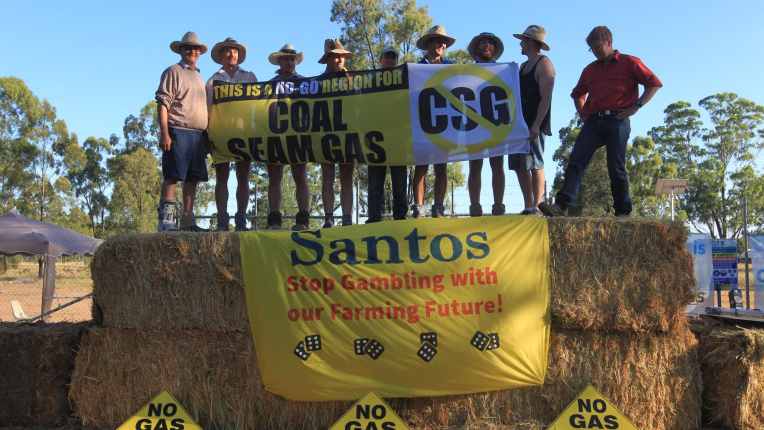New gas age is coming, but it will need hard work
by Angus TaylorIn life, business and politics there are few opportunities which tick most of the boxes.
Increasing the use of gas in Australian east coast electricity generation and industry, balanced with other energy sources, is one of those opportunities.
Australian gas now offers enormous potential for affordable, reliable and sustainable energy for Australian customers alongside its world beating exports. We need to jump on this opportunity.

In recent years, the Australian east coast gas market has faced two major challenges.
First, it gave birth to the largest liquefied natural gas export industry in the world in a few short years. This was an extraordinary success story, but it also put pressure on Australian energy intensive manufacturing and other domestic customers who had to compete with offshore customers for supply.
Second, gas faced a fearsome coalition of greens and land owners opposed to new developments. The industry suffered from weak incentives for land owners (initially at least), a vicious anti-gas lobby and some companies lacking experience in building local community support.
State governments imposed moratoriums, planning approvals were slow or non-existent, while capital costs and timelines blew out.
In combination, the industry struggled to meet its supply needs and to provide prices to local customers that were internationally competitive. LNG export trains were opened without assurance of upstream supply. Domestic customers wore some of the pain.
The situation is now very different. Suppliers and planners are in a better place.
State governments have been lifting restrictions, with NSW committed to finding 70 petajoules of annual supply through its agreement with the Commonwealth. Victoria has committed to lifting its moratorium on conventional onshore gas. Land owners have been better consulted and looked after.
The situation is now very different. Suppliers and planners are in a better place.
The new challenge (and opportunity) is the emergence of much stronger international competition.
The LNG market has internationalised dramatically in a few short years. Only three years ago, the US was barely present in the market. Now Henry Hub, on the US Gulf coast, has stormed into the global LNG market.
Total US production has grown rapidly, with 39 million tonnes exported in 2019. It is becoming the source of price discovery for international markets, with a futures market out to 2030 and an ability to flexibly and rapidly shift cargoes into European and Asian markets.
International markets are telling us that prices will be much lower in the next 10 years than they have been. While this is good news for Australian customers, it is a new challenge for our local suppliers.
If we can tap into affordable and reliable supplies of gas, we address many of our energy challenges. Gas is flexible, dispatchable, sustainable and industrial.
It can complement renewables such as wind and solar to provide firm 24/7 power, because it can be switched on and off quickly and cheaply. It can play a central role as our ageing coal-fired generators come to the end of their lives, filling a gap that pumped hydro and batteries cannot fill alone.
Combined with renewables, its emissions can be less than a third of alternatives even before carbon capture and storage.
Of course, gas is not just a source of energy – it is a crucial feedstock for industrial processes such as ammonia production, which is essential for farming and mining.
Indeed, nitrogen fertiliser produced from gas is responsible for a large proportion of the world’s food production, with no economic substitute on that scale.
Over time, there is potential to migrate many applications to low emissions hydrogen, with enormous export opportunities.
But making the most of this will require hard work.
We need local long-term gas contract prices to reflect international prices and the lower domestic spot prices emerging even before COVID-19 stuck.
There has been some softening in local contract prices, but there is further to go. The expiry of the Heads of Agreement between the Commonwealth and upstream gas suppliers is an opportunity to get this right.
Additional investments in pipeline infrastructure and compression are necessary, particularly if we are to ensure southern markets are competitive.
State governments need to provide timely approvals of major new projects across the supply chain, upstream, in pipelines, and in generation and manufacturing. That’s why the Commonwealth has been including gas commitments in its state energy deals.
Industrial relations policies, skills agendas and our local engineering sector needs to support capital projects at internationally competitive costs, and federal government policies are gearing up in these areas.
Investment in complementary hydrogen R&D projects needs to continue, which is why the federal government has committed more than $500 million to back our hydrogen industry.
The industry will need to work hard to put its case and gain the support of Australians, in the face of often irrational opposition.
Most of us want falling emissions alongside affordable, reliable energy and feedstock for manufacturing, agriculture, small business and households. To meet these goals, a strong supply of competitively priced gas is hard to beat.